Astronomers detect a radio "heartbeat" billions of light-years from Earth
Thursday, 14 July 2022 00:42 Astronomers at McGill University, MIT and elsewhere have detected a strange and persistent radio signal from a far-off galaxy, that appears to be flashing with surprising regularity. Classified as a fast radio burst, or FRB, this new signal persists for up to three seconds, about 1,000 times longer than the average FRB. Within this window, the team detected bursts of radio waves that repeat ever
Astronomers at McGill University, MIT and elsewhere have detected a strange and persistent radio signal from a far-off galaxy, that appears to be flashing with surprising regularity. Classified as a fast radio burst, or FRB, this new signal persists for up to three seconds, about 1,000 times longer than the average FRB. Within this window, the team detected bursts of radio waves that repeat ever From "i" for "inspiral" to "g" for "gamma-ray burst"
Thursday, 14 July 2022 00:42 Using supercomputer calculations, scientists at the Max Planck Institute for Gravitational Physics in Potsdam and from Japan show a consistent picture for the first time: They modeled the complete process of the collision of a black hole with a neutron star. In their studies, they calculated the process from the final orbits through the merger to the post-merger phase, in which according to thei
Using supercomputer calculations, scientists at the Max Planck Institute for Gravitational Physics in Potsdam and from Japan show a consistent picture for the first time: They modeled the complete process of the collision of a black hole with a neutron star. In their studies, they calculated the process from the final orbits through the merger to the post-merger phase, in which according to thei New radio astronomy survey peers through cosmic dust to investigate the Milky Way
Thursday, 14 July 2022 00:42 The first results from a mammoth astronomy project aimed at mapping out the origins of our 13.8 billion year old universe have been announced.
An international team of astronomers from around the globe taking part in the project named, COMAP (CO Mapping Array Project) will offer us a new glimpse into this epoch of galaxy assembly, helping to answer questions about what really caused the un
The first results from a mammoth astronomy project aimed at mapping out the origins of our 13.8 billion year old universe have been announced.
An international team of astronomers from around the globe taking part in the project named, COMAP (CO Mapping Array Project) will offer us a new glimpse into this epoch of galaxy assembly, helping to answer questions about what really caused the un ETH researchers remeasure gravitational constant
Thursday, 14 July 2022 00:42 Researchers at ETH Zurich have redetermined the gravitational constant G using a new measurement technique. Although there is still a large degree of uncertainty regarding this value, the new method offers great potential for testing one of the most fundamental laws of nature.
The gravitational constant G determines the strength of gravity - the force that makes apples fall to the ground o
Researchers at ETH Zurich have redetermined the gravitational constant G using a new measurement technique. Although there is still a large degree of uncertainty regarding this value, the new method offers great potential for testing one of the most fundamental laws of nature.
The gravitational constant G determines the strength of gravity - the force that makes apples fall to the ground o Office of Space Commerce to start developing architecture for traffic management
Wednesday, 13 July 2022 21:46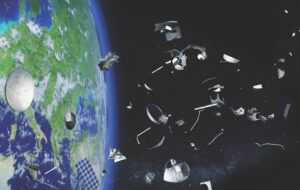
Chirag Parikh, executive secretary of the National Space Council, said he expects the Office of Space Commerce to start developing an architecture for space traffic management, an initiative that has been bogged down by studies and lack of funding.
Second ViaSat-3 payload arrives in California for integration
Wednesday, 13 July 2022 19:30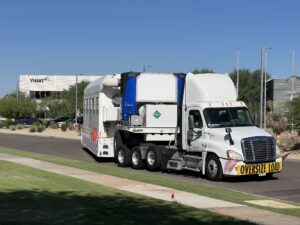
The payload for Viasat’s second ViaSat-3 broadband satellite has arrived in California to be integrated with a Boeing chassis, the operator said July 13.
The post Second ViaSat-3 payload arrives in California for integration appeared first on SpaceNews.
Air Force completes draft environmental review of U.S. Space Command candidate locations
Wednesday, 13 July 2022 18:08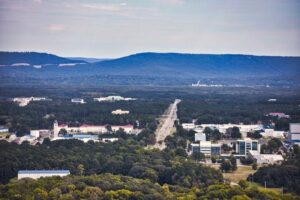
A draft environmental assessment said the proposed relocation of U.S. Space Command to Redstone Arsenal, Alabama, would have “no significant impacts on the human or natural environment.”
The post Air Force completes draft environmental review of U.S.
Highlights of the inaugural Vega-C launch
Wednesday, 13 July 2022 17:25 Video:
00:02:35
Video:
00:02:35
ESA’s newest launch system has faced its first full validation test, carrying LARES-2, a scientific mission of the Italian space agency ASI, and a secondary payload package of French, Italian and Slovenian research CubeSats.
Space weather will delay your trains
Wednesday, 13 July 2022 17:22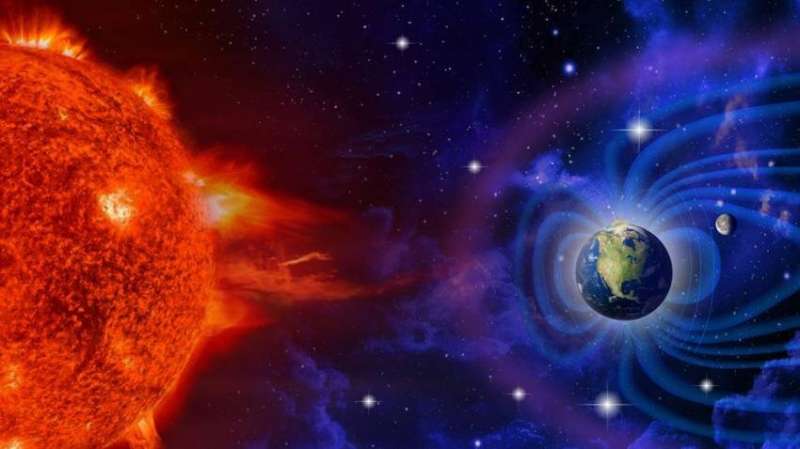
Fluctuations in space weather are disrupting train signals and causing significant delays. A project investigating the effect of solar storms on railway signals will be presented this week at the National Astronomy Meeting (NAM 2022) by Cameron Patterson, a Ph.D. student at Lancaster University.
The sun's tendency to affect technology on Earth, as well as in space, is known as space weather. In railways, electric currents caused to flow in the Earth by solar activity can interfere with the normal operation of signals, turning green signals to red even when there is no train nearby.
Patterson says: "Most of us have at one point heard the dreaded words: 'your train is delayed due to a signaling failure,' and while we usually connect these faults to rain, snow and leaves on the line, you may not have considered that the sun can also cause railway signals to malfunction.
SIRI-2 to qualify technologies for radiation detection in space
Wednesday, 13 July 2022 17:10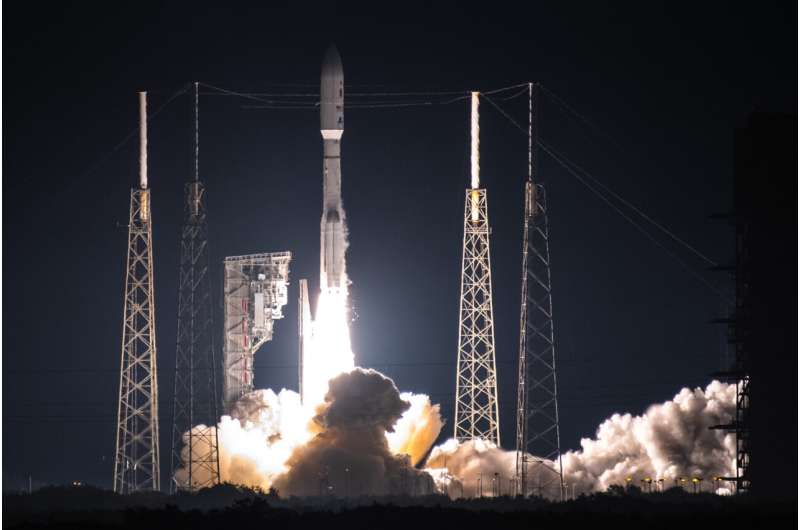
U.S. Naval Research Laboratory scientists launched the second Strontium Iodide Radiation Instrument (SIRI-2) instrument in December 2021 onboard Space Test Program (STP) Sat-6. SIRI-2, a gamma-ray spectrometer, will demonstrate the performance of europium-doped strontium iodide gamma ray detection technology with sufficient active area for Department of Defense (DoD) operational needs.
The first SIRI mission was launched Dec.
ESA fully cuts Mars mission ties with Russia, angering Moscow
Wednesday, 13 July 2022 15:37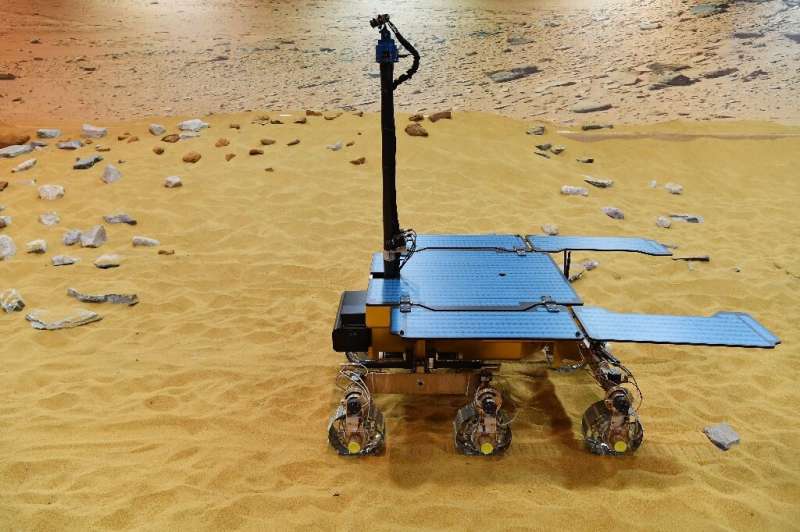
The European Space Agency has officially terminated cooperation with Russia on a mission to put a rover on Mars, with Russia's space chief furiously responding by banning cosmonauts on the ISS from using a Europe-made robotic arm.
The ESA had previously suspended ties on the joint ExoMars mission, which had planned to use Russian rockets to put Europe's Rosalind Franklin rover on the red planet to drill for signs of life, due to Russia's invasion of Ukraine.
ESA Director-General Josef Aschbacher tweeted on Tuesday that because the war and resulting sanctions "continue to prevail", the agency would "officially terminate" ties with Russia on ExoMars and its landing platform.
The firebrand head of Russian space agency Roscosmos Dmitry Rogozin issued an angry response.
"Has the head of the European Space Agency thought about the work of thousands of scientists and engineers in Europe and Russia which has been ended by this decision? Is he prepared to answer for sabotaging a joint Mars mission?" Rogozin said on Telegram.
Europe's upgraded Vega space launcher makes inaugural flight
Wednesday, 13 July 2022 15:36
Vega-C liftoff
Wednesday, 13 July 2022 13:50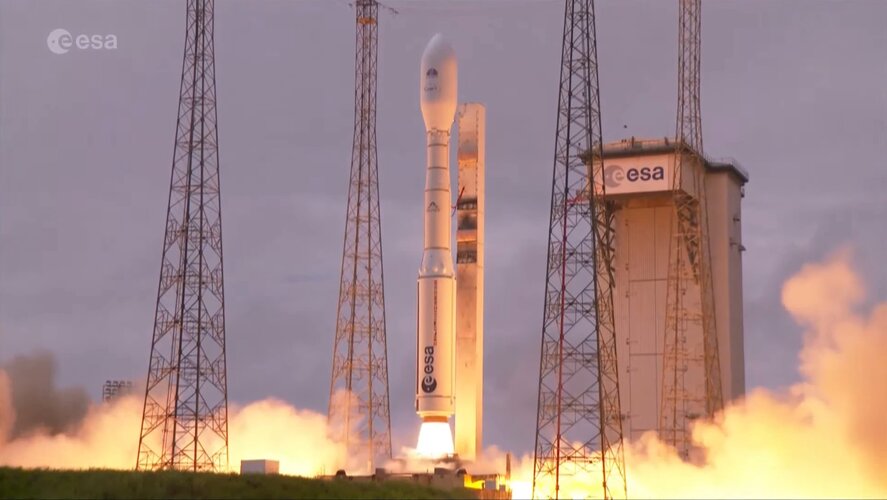 Video:
00:06:42
Video:
00:06:42
Flight VV21 clears the launch pad to begin the inaugural mission of ESA’s new Vega-C rocket from Europe’s Spaceport in French Guiana.
Vega-C lifts off on maiden flight
Wednesday, 13 July 2022 12:33
Europe’s new Vega-C medium-lift rocket lifted off on its maiden flight July 13, carrying an Italian physics satellite and six cubesats.
The post Vega-C lifts off on maiden flight appeared first on SpaceNews.
Vega C lifts off on maiden flight
Wednesday, 13 July 2022 12:33
Europe’s new Vega C medium-lift rocket lifted off on its maiden flight July 13, carrying an Italian physics satellite and six cubesats.
The post Vega C lifts off on maiden flight appeared first on SpaceNews.
